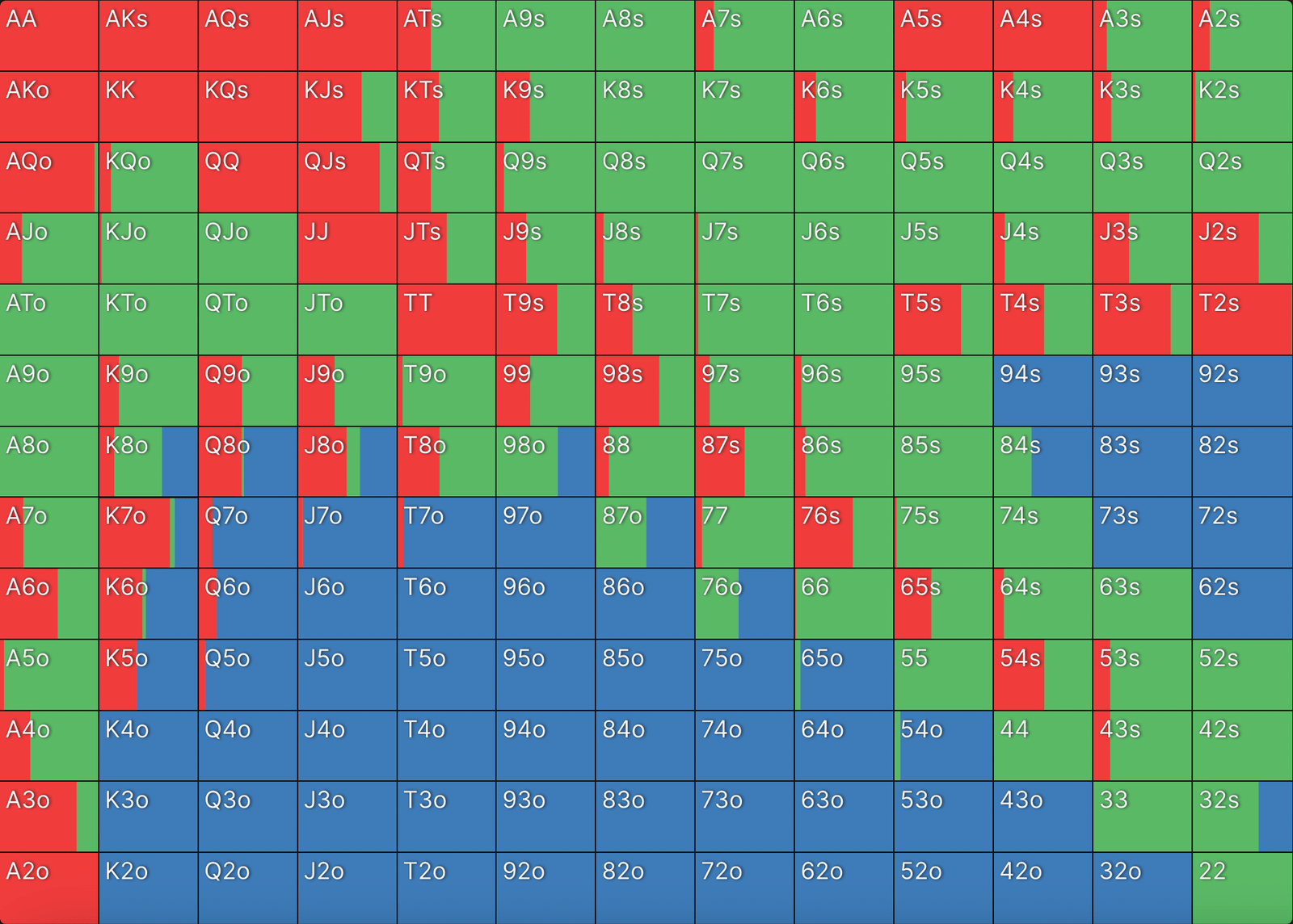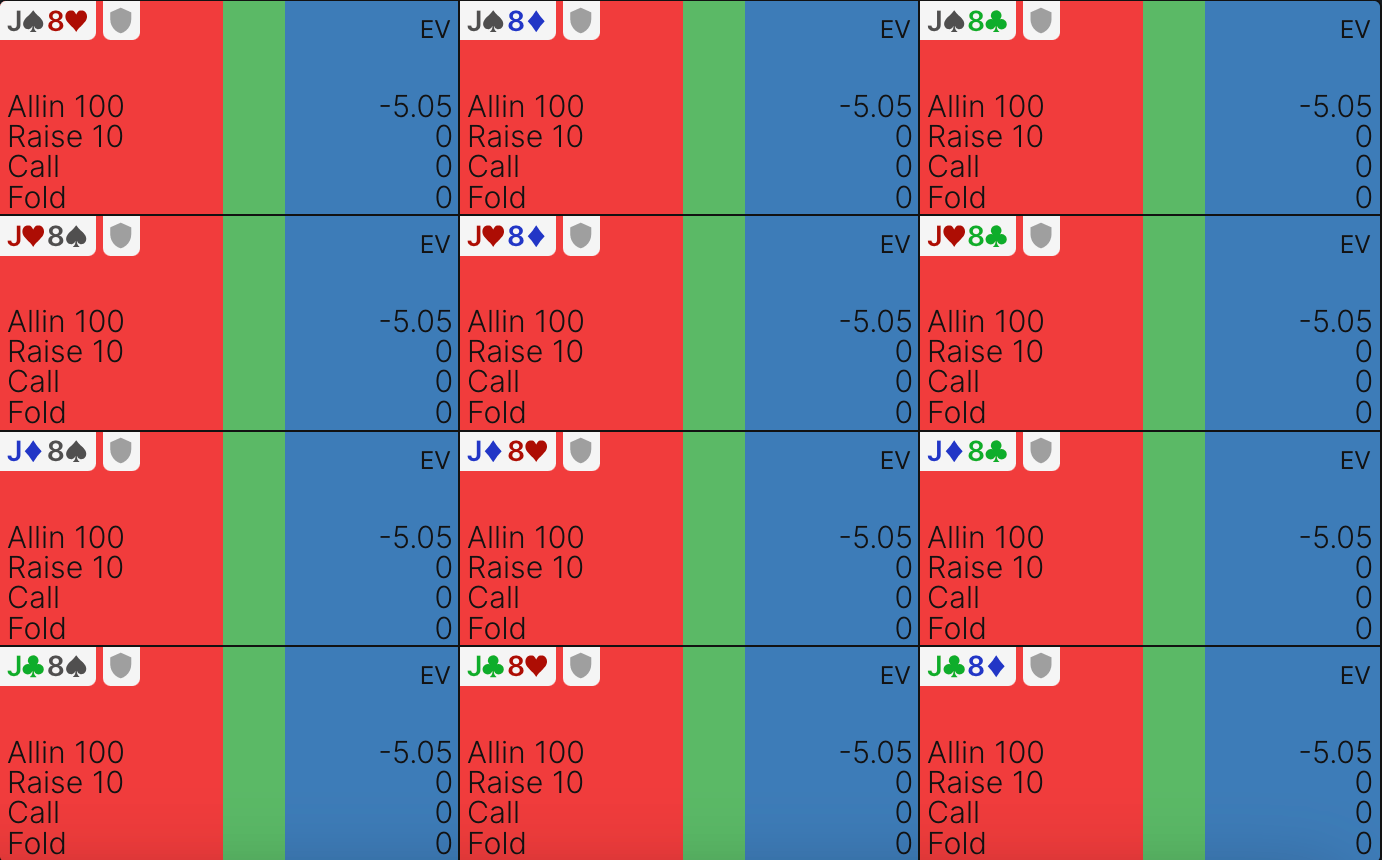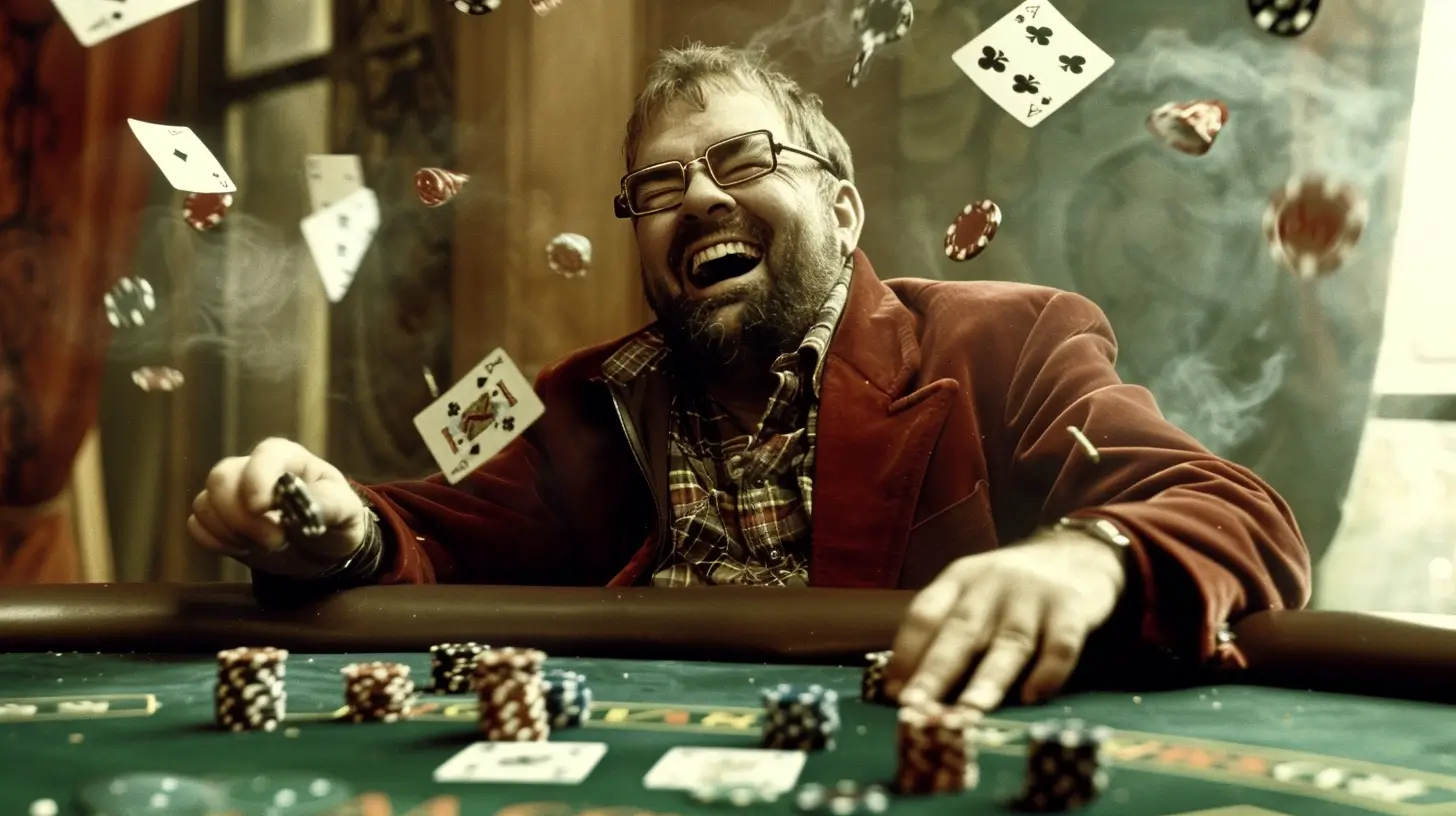Beginner's Poker Course Part 7: Indifference As It Relates To GTO
We have connected the two important poker concepts pot odds and equity in the previous article. We also saw, that your equity can be such that, you could be indifferent between making a call or folding. That is because the EV for both actions on that point would be 0. Remember that we're always striving to pick actions with the highest EV. Then, if the highest ones have the same value, we are indifferent in choosing any of them.
And here's where GTO ties in again. Remember the charts we took a look at in article 3 and article 5? Those were charts from GTOWizard on which GTO strategies were projected. Just to show you another example:

The above chart illustrates well how GTO strategies involve a lot of situations where there is indifference between two or more actions. The color blue represents a fold, green a call, red is a raise (3-bet).
We can see that many starting hands mix calls and reraises, some mix calls and folds, some even raises and folds, and some hands even mix between all 3 actions.
Whenever the solver (the algorithm behind these charts) wants to mix, it is indifferent between those actions. It also means that the EV of those actions it wants to mix over, are equal and the highest of all actions.

Caring About Indifference
We can then see how the 'old school' concepts explained in the last article (equity and pot odds) tie in nicely with modern GTO concepts. You can play in such a way, as to make your opponent indifferent between two or more actions. This is really an integral part of GTO play. I can name two good reasons to (try to) play in such a way:
- To provide overall balance to your game, making it more unexploitable (closely resembling GTO play). The 'balance' here is the 'Equilibrium' in 'Nash Equilibrium'.
- Making your opponent indifferent puts him in a 'tough spot', which can be seen as a good thing overall.
The first reason is quite abstract and highly theoretical. The second is intuitive and practically oriented.
Putting your opponent in a tough spot is generally seen as a good thing. There are time constraints in poker, and you might say that not knowing what to do, combined with the pressure of time, could lead someone to make more mistakes.
This doesn't mean that making your opponent indifferent is something to always strive for, in my opinion. There can be the case that the opponent is not getting (put) into tough spots, but is happily making mistakes, and is routinely taking actions that are not the highest EV. If this is the case, trying to make your opponent indifferent, should not be the main goal. Rather, we should then focus on simply taking the highest EV actions ourselves.

Indifference & The GTO vs. Exploitative Play Discussion
The consideration of whether to try to make our opponents indifferent between actions or not is really the same as the one we discussed a few articles ago. It is indeed about the consideration of whether to play GTO or exploitatively.
When we play exploitatively, merely opting for the most EV-maximizing actions without considering balance or inducing indifference in our opponent, it follows that our opponent should adopt a similar strategy.
The key point to grasp is that, both theoretically and practically, GTO strategies should be pitted against other GTO strategies, while exploitative play should be matched against exploitative strategies. One counters the other.
These all try to maximize EV, though; GTO maximizes EV against GTO, and exploitative play maximizes EV against exploitative play. GTO does not maximize EV against exploitative play. GTO is 'exploitative play' against GTO.
GTO and exploitative play both try to maximize EV, but GTO fails to do just that against any strategy that is not GTO.

Why GTO (and Indifference)?
People do not play perfectly GTO in practice. This is why playing GTO ourselves (or striving to) isn't really the best way to play. We've been over this.
In practice, we shouldn't really be as indifferent about actions the way we see depicted in the charts from GTOWizard. Sure, sometimes the EVs of two actions can be very close, which translates into a 'tough decision'. It is safe to say, however, that the EVs will practically never be exactly the same, the way they would be in a Nash Equilibrium.
Caring about indifference then isn't really a thing in real human games. On both sides of the coin, that is; we don't have to care too much about making our opponent indifferent, and we shouldn't really assume that we are indifferent ourselves much at all.
I hope you see the correlation between this whole 'indifference discussion' and the earlier one about GTO versus exploitative play. But are these charts useless? I'd say not at all. And here is why:
"The better you can exploit your opponent, the less you need these charts."
The charts are then a defense against (possible) opponents that can exploit you better than you can exploit them. They can be seen as a fallback. Because if you fail to exploit your opponent, and he exploits you in turn; what else can you do but fall back on these GTO strategies?
Not only that, if you have a good idea of solid baseline GTO play but perhaps you're not sure how to exploit your opponent. You can start out by playing GTO, and nudge your strategy slightly in the direction of what you think would start exploiting your opponent. Deviating from GTO play in order to exploit, is a very solid ground to play from.
Learning GTO is generally a very smart move if you're not sure on how to exploit. I advise you to create an account at GTOWizard if you haven't already. You can use it for free, or get access to more by getting a subscription. Just make sure you follow my link to get a 10% discount if ever you choose to get one. But by all means, check it out first for free!

